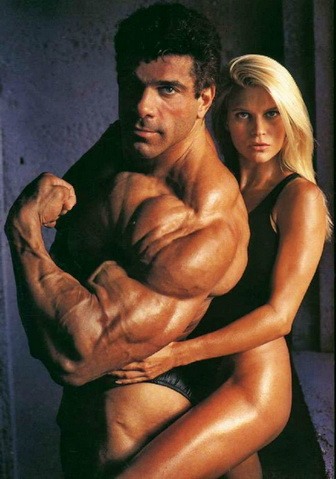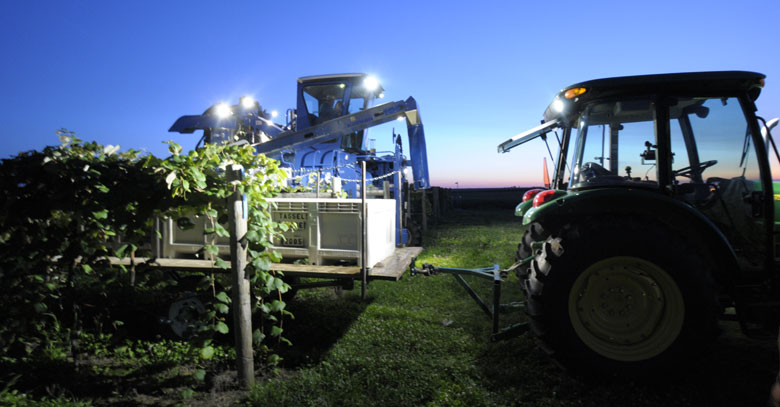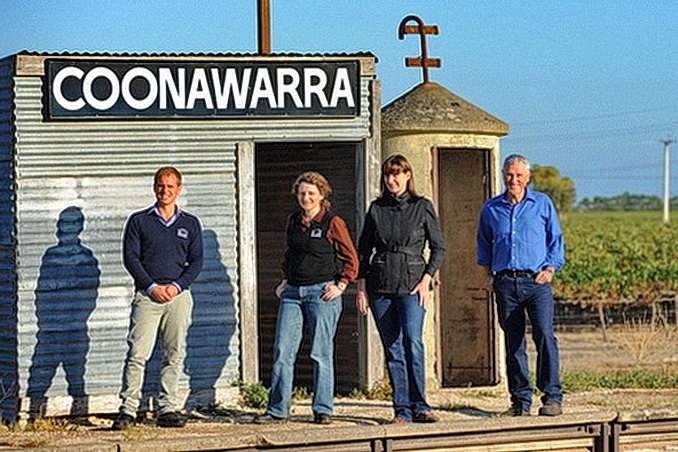The Way We Were
The Coonawarra reds I remember from the sixties and seventies were delicate creatures, much as Bordeaux reds were in those days, and you often wished for a little more fruit and body.
 Today it’s hard to find Cabernets or Cabernet blends from Coonawarra that aren’t 14.5% alcohol or more, even in coolish years like 2010 and 2012. Overripe, jammy, extracted reds that assault your senses have become the norm, as have alcohol levels of 14.5 to 15%. Some of Doug Bowen’s reds come to mind – his 2013 Shiraz is 15.5% – and Brand’s Blockers Cabernets often run close to 15%. Chunky, clunky, clumsy wines from an area that once made the most elegant reds in Australia. What happened?
Today it’s hard to find Cabernets or Cabernet blends from Coonawarra that aren’t 14.5% alcohol or more, even in coolish years like 2010 and 2012. Overripe, jammy, extracted reds that assault your senses have become the norm, as have alcohol levels of 14.5 to 15%. Some of Doug Bowen’s reds come to mind – his 2013 Shiraz is 15.5% – and Brand’s Blockers Cabernets often run close to 15%. Chunky, clunky, clumsy wines from an area that once made the most elegant reds in Australia. What happened?
The Parker Paradigm
The American wine writer who makes and breaks reputations at will developed a great fondness for the big ripe reds made in South Australia and Victoria. In the late nineties, he gave a 1996 Chris Ringland Shiraz 100 out of 100 points and called it ‘arguably the greatest Shiraz made in Australia … this viscous, black/purple-colored wine represents the essence of both wine and Shiraz … it is akin to a dry vintage port.’ It was 15.3%.
Parker’s done the same in Bordeaux, where he’s championed bigger and riper reds for years. Peter Scudadmore-Smith wrote that ‘… many UK scribes are gratuitously praising the 2009 Bordeaux for their quality yet stepping around the fact that alcohol levels in most right bank merlots run between 14.5 and 15.3 percent. Left bank cabernets are hitting mid-14s. The crazy issue is that big super-structured reds will not show their alcohol at the point of sale …’
It’s not Global Warming
British wine writer Jancis Robinson cites a working paper published in May 2011 by the American Association of Wine Economists, which found that the increase in average alcohol levels in wines across the world was much greater than could be explained by global warming. The researchers concluded that ‘the rise in alcohol content of wine is primarily man-made’.
Yes, winemakers make these rich, ripe, forward reds because they’re easier to sell. They also win more medals since judges reliably fall for wines with obvious charms like voluptuous curves, succulent fruit and velvety tannins. Reds like these also have instant appeal to consumers since riper fruit and more alcohol (glycerol) make for a richer, smoother wine with a velvety mouth feel.
The Numbers Game
The problem comes a few years down the track when the rich blush of youth has worn off and you’re left with chunky reds that lack bright energy, freshness, vibrant fruit and balance. Since most wine is drunk young, it’s easy to understand why winemakers opt for the high-alcohol formula. For those of us who want to cellar wines, or buy more elegant wines in the first place, the news is pretty grim since the rise in alcohol has been almost universal in the last couple of decades.
Leconfield is a useful example because I’ve bought their wines for decades, and they show a clear progression:
- Leconfield Coonawarra Cabernet Sauvignon 1996 – 13%
- Leconfield Coonawarra Cabernet Sauvignon 2006 – 14%
- Leconfield Coonawarra Cabernet Sauvignon 2014 – 14.5%
We can see the same progression in other reds, including Grange and St Henri as we show here: Aussie Reds – so much alcohol, so little finesse.
Mechanisation – a drug of addiction
 By the nineties, mechanical pruning and harvesting had become the norm in our bigger vineyards, and the vast, dead-flat expanse of Coonawarra was the perfect terrain. The savings were irresistable, and the gains considerable. As James Halliday recalls: ‘… the major wineries were hellbent on producing the maximum yield per hectare at the lowest possible price … low-cost viticulture had become a drug of addiction, facilitating discounting of already low-priced wines, yet providing a return on the annual running cost.’
By the nineties, mechanical pruning and harvesting had become the norm in our bigger vineyards, and the vast, dead-flat expanse of Coonawarra was the perfect terrain. The savings were irresistable, and the gains considerable. As James Halliday recalls: ‘… the major wineries were hellbent on producing the maximum yield per hectare at the lowest possible price … low-cost viticulture had become a drug of addiction, facilitating discounting of already low-priced wines, yet providing a return on the annual running cost.’
What’s this got to do with rising alcohol levels in Coonawarra reds? Let’s step back for a moment: sugar level determines the alcohol and natural acidity of a wine. Phenolics determine a wine’s colour and flavour compounds, and its grape tannins. These compounds advance along different maturing curves – in hot climates like ours, phenolic ripeness tends to lag behind sugar ripeness. In cold climates like Germany’s, it’s the other way round. In perfect climates, the two curves intersect.
With mechanical pruning and harvesting, the abundant vine canopies tend to slow phenolic ripening of grapes and that means later picking at higher sugar levels. Picking later also reduces the number of unripe berries that end up in the crusher, the ones that caused those strange green pea and capsicum flavours in the eighties in Coonawarra reds.
Chasing Finesse
A surprising exception to the rule is Wynns, which owns over half the vineyard area in Coonawarra. Sue Hodder became chief winemaker for Wynns in 1998, and together with vineyard manager Allen Jenkins turned the place upside down in what Tyson Stelzer describes as ‘a ruthless regime of vineyard rejuvenation’ that included replanting and retrellising, and better clone selection and matching to specific vineyards.
Last year, Treasury Wine Estates decided to rationalize its winemaking operations. Wynns Coonawarra wine making will be transferred to its Karadoc facility in the Riverland. ‘Processing of masstige wine at Great Western and Wynns Coonawarra will be transferred to Wolf Blass,’ The Weekly Times tells us. In case you’re not familiar with the term ‘masstige’, marketers use it to describe mass-produced, relatively inexpensive goods with prestigious pretensions.
What will happen to Sue Hodder and her team down in Coonawarra? Who knows.
Kim
More Reading: Coonawarra – How they killed the Golden Goose

